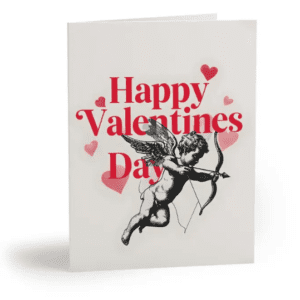Although you’re familiar with greco-roman mythology, you may have a hard time recognizing each of the 12 greek gods on sculptures and classical paintings. There is a trick! Learn their symbols and characteristics, and you’ll be able to recognize them instantly on every piece of ancient art.
Let’s begin with
Zeus
- Roman counterpart: Jupiter
- The Father god
- Sky god of lightning and thunder
- How to recognize him: he’s depicted as a bearded man holding a thunderbolt. He sometimes wears a laurel crown, is accompanied by an eagle or Nike (goddess of victory).
Hera
- Roman counterpart: Juno
- Sister and wife of Zeus, which makes her the queen of the gods
- Goddess of women, marriage, childbirth, fidelity and nurturing
- Patron of kings and empires
- She was cheated on by her husband Zeus on multiple occasions which makes her a very jealous goddess.
- How to recognize her: with a diadem, scepter or accompanied by a peacock

Poseidon
- Roman name: Neptune
- While his brother Zeus governs the sky, Neptunes governs everything that’s water.
- He’s the god of the sea, rivers and flood. He’s also the cause of natural disasters, like droughts and earthquakes.
- How to recognize him: he holds a trident
- Essentials on Poseidon here
Aphrodite
- Roman counterpart: Venus
- Goddess of beauty, love and sex
- Born from the sea foam caused by the severed genitals of Uranus, a primordial god and grandfather of Zeus
- How to spot her: by her fairness and nakedness. She’s often associated with seashells
Athena
- Roman name: Minerva
- Born fully adult from Zeus’s head
- Goddess of wisdom, intelligence, warfare, battle strategy and justice
- Patron of heroes and of the city of Athens
- How to spot her: She always wears a piece of armour, most often a warrior helmet. She can be seen holding a spear and/or a shield. There’s often an image of Medusa’s head on her armour or on her necklace. Athena is associated with wisdom which is symbolized by the owl, so you’ll sometimes find an owl around her, or simply representing her.
Hephaestus
- Roman counterpart: Vulcan
- God of metalwork, fire and craft
- The smith of the greek gods
- His wife is Aphrodite. But she cheated on him big time. (Lots of cheating in Greek and Roman mythology)
- How to spot him: with a smith hammer, tool, or in the middle of crafting a helmet
Apollo
- That’s his name both in Greek and Roman mythology
- God of the arts and knowledge
- Also god of healing and plagues
- He’s later identified as a sun god and equated to the Roman god Sol and Greek god Helios.
- His twin sister is Artemis
- How to recognize him: He often wears a laurel leaf and carries a bow and lyre. He can be seen with the 9 Muses who also represent the arts and knowledge
Artemis
- Roman counterpart: Diana
- Goddess of the moon and of young girls
- Goddess of the hunt, wilderness and animals
- Her twin brother is Apollo
- How to recognize her: She carries a quiver containing a bow and arrows. She is surrounded by deer and other wild animals. She often wears a knee length dress. (Knee length dress, as opposed to a long dress, identifies the wearer as a young virgin)

Demeter
- Roman counterpart: Ceres
- Goddess of harvest, grain, agriculture, growth and nourishment
- When Hades, the Greek god of the underworld, abducted her daughter, she became depressed and withdrew, which halted the crops. Therefore, Zeus the king of greek gods, struck a deal with Hades; her daughter (Persephone) was to be allowed on earth for half of the year, which makes Demeter (aka “agriculture and growth”) functional for half of the year.
- How to spot her: You’ll see around her a cornucopia, wheat, a torch or scepter
Ares
- Roman counterpart: Mars
- God of war, bloodshed and violence
- Brother to goddess Athena, who is also associated with war
- How to recognize him: Like his sister, he wears a piece of armour (a helmet, a spear with an image of a face, a shield). Sometimes he’s seen with a cupid baby at his feet, and sometimes with a torch.
Hermes
- Roman equivalent: Mercury.
- God of travel, trade, language – anything to do with communication
- Messenger of the gods and psychopomp for newly deceased souls
- Ambassador for cunning and thieves
- How to spot him: He has wings attached to either his helmet, sandals or staff. Another prominent symbol of Hermes is the caduceus. He can also be spotted with a simple hat.
Dionysus
- Roman counterpart: Bacchus
- A demi-god; born of Zeus and of a mortal woman
- Represents wine, ecstasy and madness (really, intoxication)
- God of vegetation, wilderness and shepherds
- Later, a god of theatre
- He is known for being a foreigner
- Dionysus was added to the greek pantheon of 12 gods later on. He replaced Hestia
- How to recognize him: Dionysus is frequently depicted with grapes, grapevines or grape leaves (sometimes fruits and vegetation). These would adorn his head, his staff, or simply his surrounding. A lot of ancient art shows him holding a cup of wine, or drunk and leading a procession of satyrs and wild animals (especially panthers and lions).

Hestia
- Goddess of chastity or virginity
- She also embodies the home, hearth and domesticity
- How to recognize her: she is seen holding a torch, flowers or a kettle. She can also be seen around fire.
Identifying the greek gods (and roman) is just one small part of the mythology journey. Another (big) part is learning about the stories and the intricacies between them and their characters!











